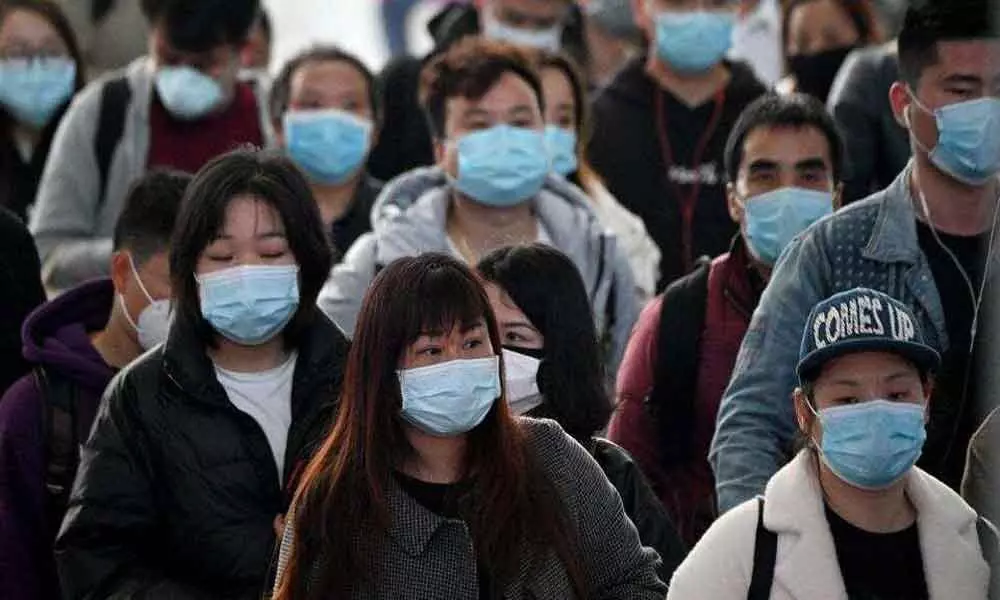Coronavirus: COVID-19 Clampdown is a reduction in emissions almost 25% in China
 Representational Image
Representational ImageSince the first week of February, China has reported a 25% decrease in carbon dioxide (CO2) emissions in the latest coronavirus (COVID-19) outbreak, according to an analysis conducted by the Center for Energy and Clean Air Research (CREA).
Since the first week of February, China has reported a 25% decrease in carbon dioxide (CO2) emissions in the latest coronavirus (COVID-19) outbreak, according to an analysis conducted by the Center for Energy and Clean Air Research (CREA). The introduction of COVID-19 to the U.S. and Europe has resulted in a significant decrease in both the use of airline resources and the global demand for oil.
Experts believe that the health care crisis, which is likely to lead to a significant recession in the economy but may also contribute to a slight turn, although briefly, in the global CO2 emissions curve.
The decline in CO2 emissions in China is mainly due to a 36 percent decrease in coal consumption in the world's most populous power plants; a 29 percent decrease in coal production in the largest coal port; a 34 percent decrease in oil refinery capacity and low output among major industrial sectors, which may have dropped by 15 to 40 percent during the same time. The report published in Carbon Brief, the UK-based climate change blog,
Every year during Chinese New Year in February, China closes major facilities, building sites for a week leading to a decrease in energy demand, but this year the normal decline in energy use has been extended without any sign of a rebound.
The National Aeronautics and Space Administration (NASA) and the emission monitoring satellites of the European Space Agency (ESA) also showed a significant decline in the concentrations of nitrogen dioxide (NO2) over China between 10 and 25 February. There is proof that the transition is at least partly correlated with the post-coronavirus outbreak economic slowdown, "said a NASA Earth observatory report. NASA maps of NO2 values across China from 1-20 January, 2020[ before the quarantine], and 10-25 February[ during the quarantine] show a noticeable reduction.
According to the study, the NO2 pollution reduction was first reported near Wuhan, central China's epicenter of the outbreak, but eventually spread across the country.
"For a specific event, this is the first time I have seen such a dramatic drop over such a wide area," says Fei Liu, an air quality researcher at NASA's Goddard Space Flight Center, in the study. During the global economic crisis in 2008, a similar decrease in NO2 was observed over several countries. The massive impact of COVID-19 on the aviation sector and business in general can lead to a reduction in CO2 emissions globally. According to OAG, a UK-based travel data provider, the projected airline capacity was 40.8 million fewer seats worldwide between January and April as opposed to last year. The OAG data also shows that the scheduled airline capacity more than halved between January 20 and February 10, but from February 24 to March 2 recovered by 50 per cent.
Global oil demand has been hit hard following the widespread shutdown of China's economy, according to the oil market study for February by the International Energy Agency. Demand is now expected to fall in over 10 years, for the first time. We've cut our estimate for growth in 2020 by 365 kilo barrels per day (kb / d) to 825 kb / d, the lowest since 2011. Lower than anticipated OECD consumption[ Organization for Economic Co-operation and Development] has reduced the growth of last year to 885 kb / d, "the report said.
Data shows that the steep increase in CO2 emissions is likely to be curbed and that the curve may also bend, although briefly. After the first Intergovernmental Panel on Climate Change in 1990, a graph by the Global Carbon Project shows CO2 emissions fell leading to brief bends in the emissions curve during the oil crisis of the mid-19070's and 1980's. during the SARs (Severe Acute Respiratory Syndrome) outbreak in 2003 and the global financial crisis in 2008.
World crises have set a sequence: travel can be optimized and the importance of maintaining domestic supply chains that can reduce global CO2 emissions can be underlined. "Some of the travel restrictions in place in China have come at tremendous human and economic costs— people being unable to access healthcare, going to work, among others.Nevertheless, remarkable adoption of video conferencing, remote work and other modern business approaches, which are a real alternative to commuting and business travel, has also taken place. There is a possibility that once the crisis is over, we will see a permanent change in the use of these strategies to reduce the need to spend time, resources and fossil fuels on travel, "said CREA's Finnish lead analyst Lauri Myllyvirta. But it's hard to evaluate how the COVID-19 epidemic has affected pollution in the US and Europe because the controls in those countries are nowhere near China.
"Apart from the effect on flights and freight ships to and from China, the impact in the EU [European Union] and the US is not close at the same degree anywhere. Global supply chains have been affected, but China and countries exporting goods to China account for much of the pollution from those. The measures taken elsewhere, with the exception of those five cities in Italy, are not nearly as dramatic as those affected in China, with factories, construction sites, freight lines, etc. being shut down for weeks, "added Myllvyirta.
There is a lesson on mitigating air pollution, said Anumita Roy Chowdhury, Center for Science and Environment's executive director. "These are changes triggered by crisis that have been made by people. You can see the cumulative impact of economic slowdown and air quality travel restrictions. Long-term lesson is where we need policies to reduce travel speed and distances in order to have a similar effect. It will have to change the way they communicate with each other and function, "she said.
"When we want a respite from the turmoil of climate change... By the middle of this century we will have net zero emissions. This is a reasonable chance to limit global warming to 1.5 degrees centigrade... Even if we have a brief, slight CO2 dip due to the current outbreak, it won't help," said Roxy Mathew Koll, senior climate scientist at the Climate Research Lab, Indian Institute of Tropical Meteorology.
Most analysts fear that a round of "retaliatory emissions" will follow after Beijing has weathered through the current crisis. "For China, therefore, the story is: a significant decline in short-term emissions[ at the cost of economic growth,' with many medium to long-term uncertainties, and the ability to embrace heavy industries further," Li Shuo said, Senior climate and energy policy officer at Greenpeace East Asia based in Beijing.

















